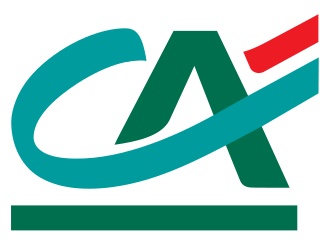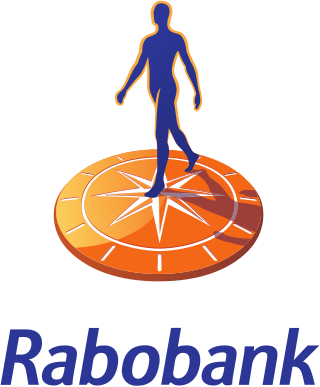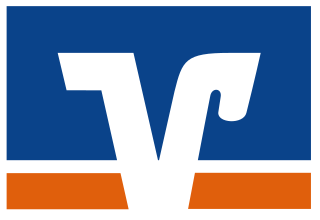
A cooperative is "an autonomous association of persons united voluntarily to meet their common economic, social and cultural needs and aspirations through a jointly owned and democratically-controlled enterprise". Cooperatives are democratically controlled by their members, with each member having one vote in electing the board of directors. They differ from collectives in that they are generally built from the bottom-up, rather than the top-down. Cooperatives may include:

Crédit Agricole Group, sometimes called La banque verte, is a French international banking group and the world's largest cooperative financial institution. It is the second largest bank in France, after BNP Paribas, as well as the third largest in Europe and tenth largest in the world. It consists of a network of Crédit Agricole local banks, 39 Agricole regional banks and a central institute, the Crédit Agricole S.A.. It is listed through Crédit Agricole S.A., as an intermediate holding company, on Euronext Paris' first market and is part of the CAC 40 stock market index. Local banks of the group owned the regional banks, in turn the regional banks majority owned the S.A. via a holding company, in turn the S.A. owned part of the subsidiaries of the group, such as LCL, the Italian network and the CIB unit. It is considered to be a systemically important bank by the Financial Stability Board.

Rabobank is a Dutch multinational banking and financial services company headquartered in Utrecht, Netherlands. The group comprises 89 local Dutch Rabobanks (2019), a central organisation, and many specialised international offices and subsidiaries. Food and agribusiness constitute the primary international focus of the Rabobank Group. Rabobank is the second-largest bank in the Netherlands in terms of total assets.

Friedrich Wilhelm Raiffeisen was a German mayor and cooperative pioneer. Several credit union systems and cooperative banks have been named after Raiffeisen, who pioneered rural credit unions.

DZ Bank AG is the second largest bank in Germany by asset size and the central institution for around 800 cooperative banks and their around 8,500 branch offices. Within the German Cooperative Financial Group, which is one of Germany's largest private sector financial service organizations and manages assets of around 1.200 trillion euros, DZ Bank functions both as a central institution and as a corporate and investment bank.

Cooperative banking is retail and commercial banking organized on a cooperative basis. Cooperative banking institutions take deposits and lend money in most parts of the world.

Banque Populaire was a French group of cooperative banks, with origins in the European cooperative movement. In 2009, it merged with Groupe Caisse d'Épargne to form Groupe BPCE.

The Deutsche Genossenschafts- und Raiffeisenverband e.V. (DGRV) is the Co-operative federation for German Co-operatives.

Credit unions are not-for-profit financial cooperatives. In the early stages of development of a nation's financial system, unserved and underserved populations had to rely on risky and expensive informal financial services from sources like money lenders, ROSCAs and saving at home. Credit unions proved they could meet demand for financial services that banks could not: from professional, middle class and poorer people. Those that served poorer urban and rural communities became an important source of microfinance.

The Raiffeisen Banking Group is a group of cooperative banks in Austria. The Austrian Raiffeisen banks are not consolidated under a single parent entity but are financially linked through a common institutional protection scheme and deposit guarantee scheme. The group's international operations, by contrast, are consolidated under Raiffeisen Bank International (RBI).
TIPANET is an international payment system set up by the European cooperative banks. Its shareholders were Natexis Banques Populaires, France; Banca Popolare Commercio e Industria, Italy; Istituto Centrale delle Banche Popolari Italiane, Italy; Banco Popular de España, Spain; Crédit Professionnel, Belgium; The Cooperative Bank plc, United Kingdom; Österreichische Volksbanken AG, Austria; Genossenschaftliche FinanzGruppe, Germany, and Caisse Centrale Desjardins Quebec, Canada.

The National Association of German Cooperative Banks is the umbrella association for the German Cooperative Financial Group. Its origins go back to 1864 as Allgemeiner Verband der auf Selbsthilfe beruhenden Deutschen Erwerbs- und Wirtschaftsgenossenschaften. As of 2015 it had 1,021 members, which represents all the cooperative banks in Germany, including local cooperative banks, PSD banks, Sparda banks, Church banks and Cooperative financial institutions, managing around 1.200 trillion euros.

The German Cooperative Financial Group is a major cooperative banking network in Germany that includes local banks named Volksbanken and Raiffeisenbanken, the latter in tribute to 19th-century cooperative movement pioneer Friedrich Wilhelm Raiffeisen. The Cooperative Group represents one of the three "pillars" of Germany's banking sector, the other two being, respectively, the Sparkassen-Finanzgruppe of public banks, and the commercial banking sector represented by the Association of German Banks.

Crédit Mutuel is a French cooperative banking group, one of the country's top five banks with over 30 million customers. It traces its origins back to the German cooperative movement inspired by Friedrich Wilhelm Raiffeisen in Alsace–Lorraine under German rule, in the 1880s. Crédit Mutuel was a member of the International Raiffeisen Union (IRU).
VBU Volksbank im Unterland eG is a cooperative German bank situated in Schwaigern, Baden-Wuerttemberg. The bank is a member of the German Cooperative Financial Group and of its representative association, the Bundesverband der Deutschen Volksbanken und Raiffeisenbanken, as well as of the Baden-Wuerttembergischer Genossenschaftsverband.
Raiffeisenbank or Raiffeisen Bank refers to cooperative banks in Europe that are rooted in the early credit unions of Friedrich Wilhelm Raiffeisen. The name is found in:

Unico Banking Group was a partnership of eight European co-operative banks founded in 1977 and effectively wound down in 2017.
ICCREA Group, known formerly as Istituto Centrale delle Casse Rurali ed Artigiane, is a central institution of Italian credit unions and rural savings banks. The holding company of the group was ICCREA Holding, while ICCREA Banca, ICCREA BancaImpresa, and several other companies were subsidiaries. However, ICCREA Banca merged with ICCREA Holding in mid-2016 as part of the banking reform in Italy. The co-operative banks of Italy would create strong central banks with power to recapitalize individual co-operative banks.
Cassa Centrale Banca - Credito Cooperativo del Nord Est S.p.A. is a coordinating institute of the cooperative banks of Trentino, based in Trento, Trentino, Italy. Some cooperative banks of Veneto and Friuli Venezia Giulia are also members.














